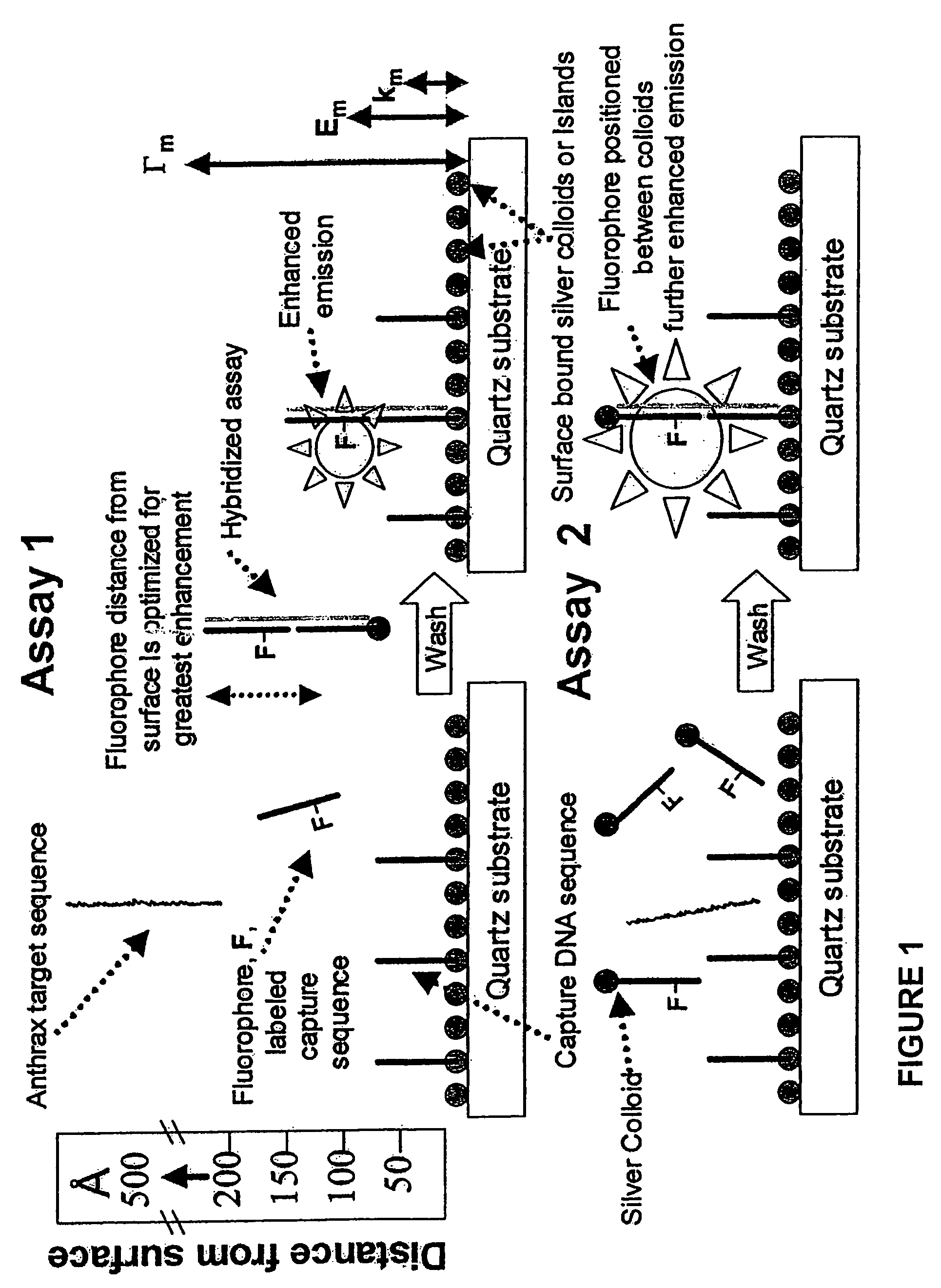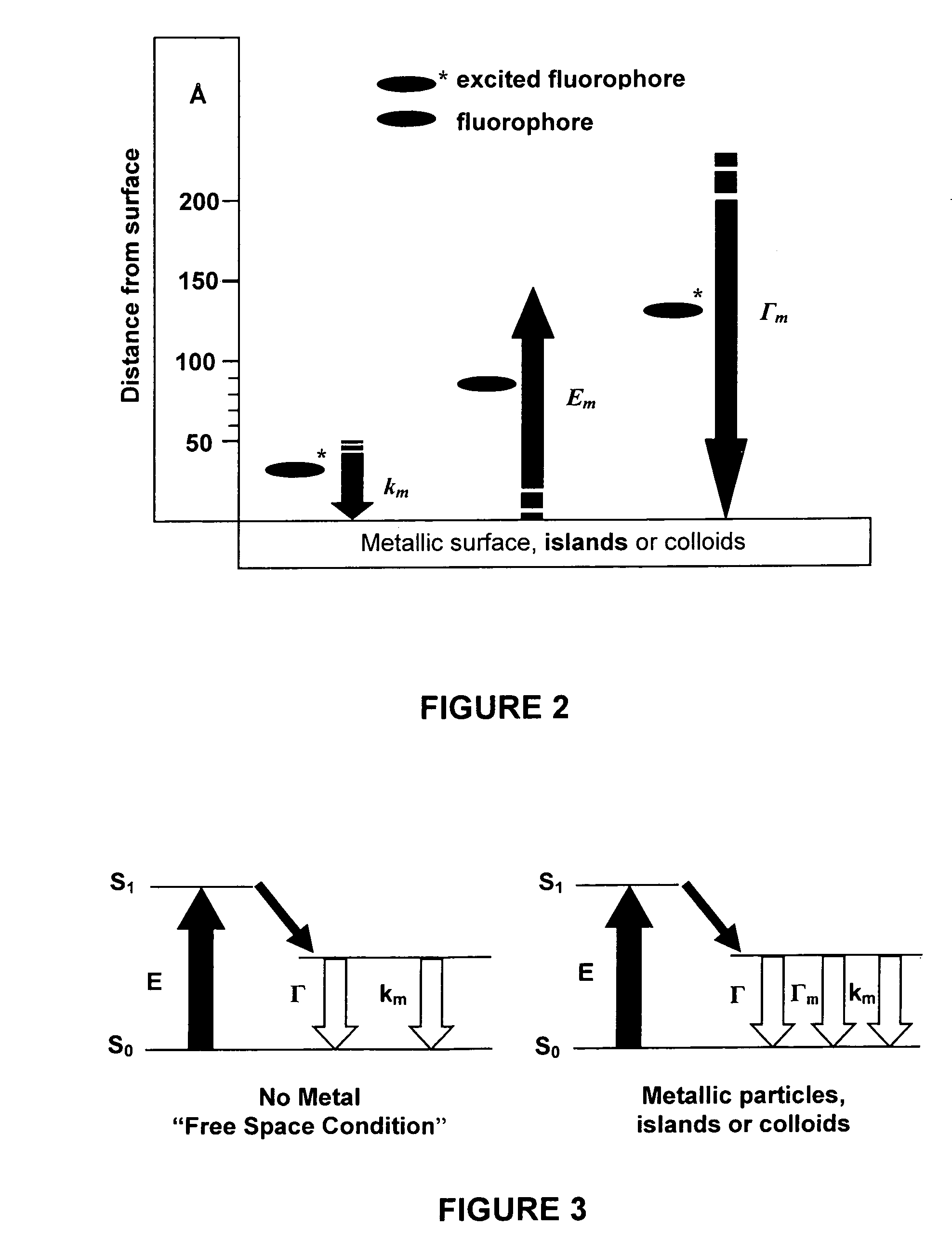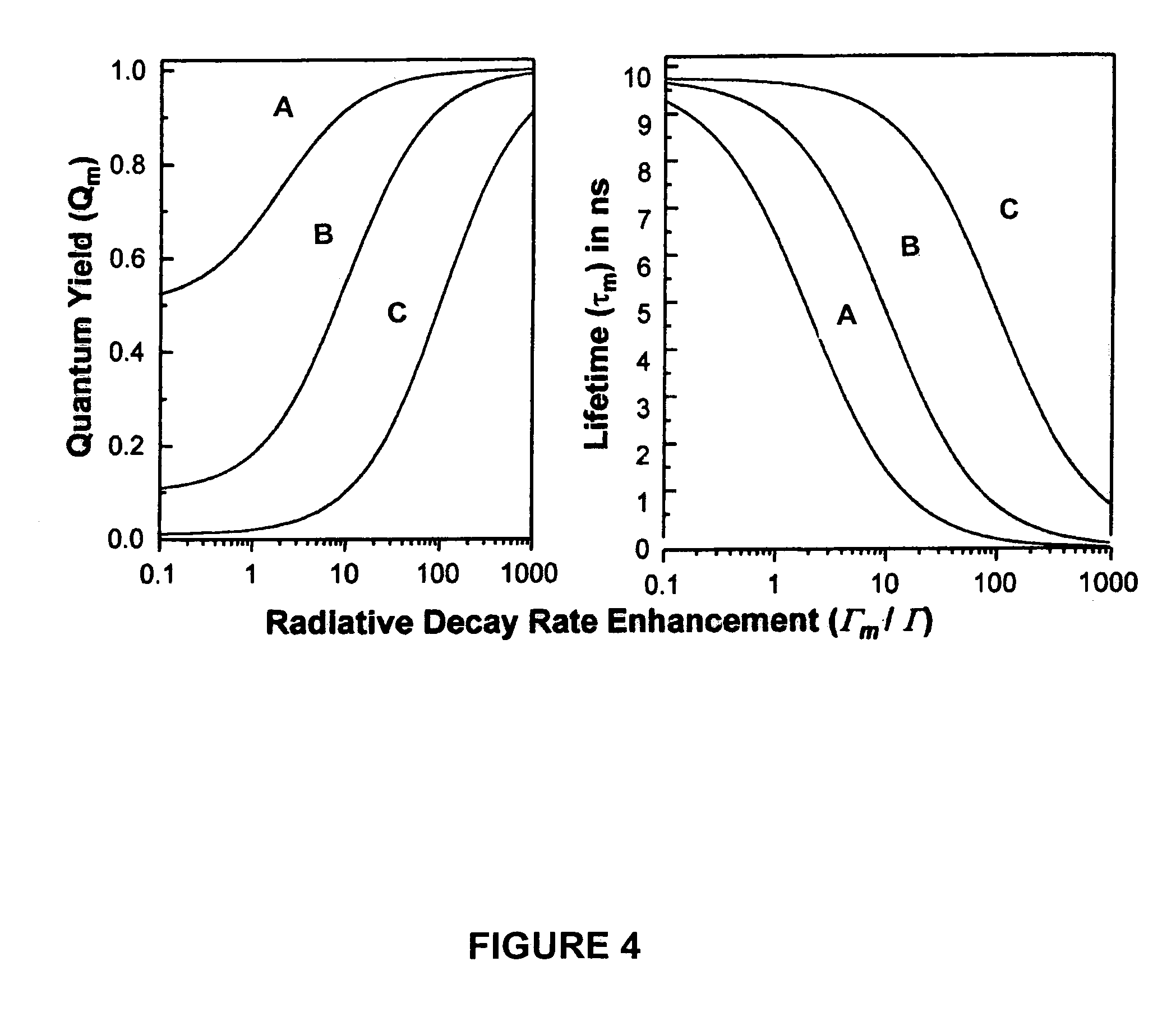High-sensitivity assays for pathogen detection using metal enhanced fluorescence
a high-sensitivity, fluorescence-enhancing technology, applied in the direction of fluorescence/phosphorescence, instruments, organic chemistry, etc., can solve the problems of difficult differentiation of threat agents, particularly i>b. anthracis /i>from other nonpathogenic dose relatives, and take several days to produce, and achieves low copy number detection and superior high sensitivity detection
- Summary
- Abstract
- Description
- Claims
- Application Information
AI Technical Summary
Benefits of technology
Problems solved by technology
Method used
Image
Examples
Embodiment Construction
[0059]Before the present invention is disclosed and described, it is to be understood that this invention is not limited to the particular process steps and materials disclosed herein as such process steps and materials may vary somewhat. It is also to be understood that the terminology used herein is used for the purpose of describing particular embodiments only and is not intended to be limiting since the scope of the present invention will be limited only by the appended claims and equivalents thereof.
[0060]It must be noted that, as used in this specification and the appended claims, the singular forms “a,”“an,” and “the” include plural references unless the content clearly dictates otherwise.
[0061]As used hereinafter the terms fluorescent dye, fluorochrome, or fluorophore are used interchangeably and bear equivalent meanings. Fluorophore used in this invention are preferably of the general class known as cyanine dyes, with emission wavelengths between 550 nm and 900 nm. These dy...
PUM
| Property | Measurement | Unit |
|---|---|---|
| emission wavelengths | aaaaa | aaaaa |
| emission wavelengths | aaaaa | aaaaa |
| infrared wavelengths | aaaaa | aaaaa |
Abstract
Description
Claims
Application Information
 Login to View More
Login to View More - R&D
- Intellectual Property
- Life Sciences
- Materials
- Tech Scout
- Unparalleled Data Quality
- Higher Quality Content
- 60% Fewer Hallucinations
Browse by: Latest US Patents, China's latest patents, Technical Efficacy Thesaurus, Application Domain, Technology Topic, Popular Technical Reports.
© 2025 PatSnap. All rights reserved.Legal|Privacy policy|Modern Slavery Act Transparency Statement|Sitemap|About US| Contact US: help@patsnap.com



